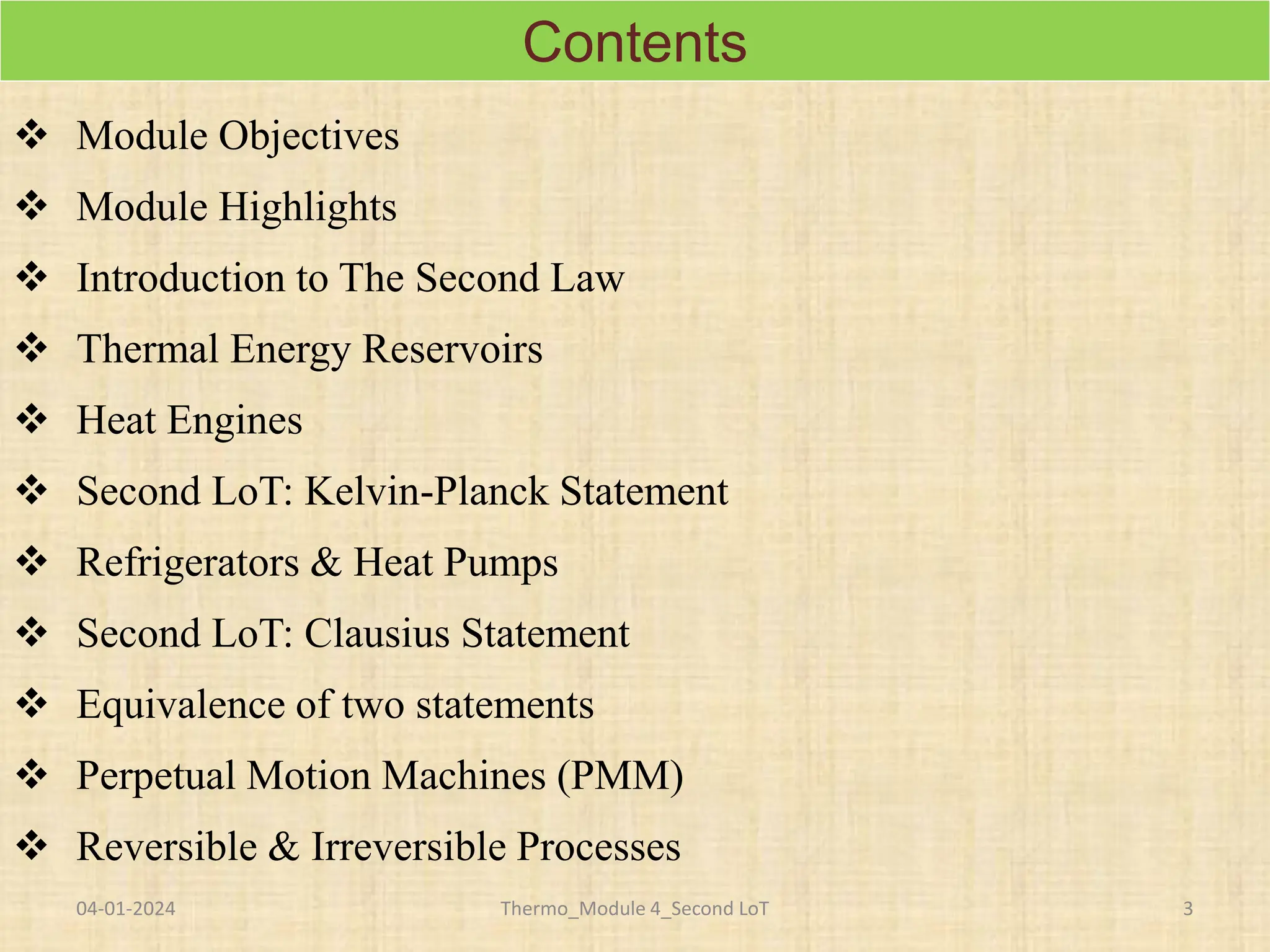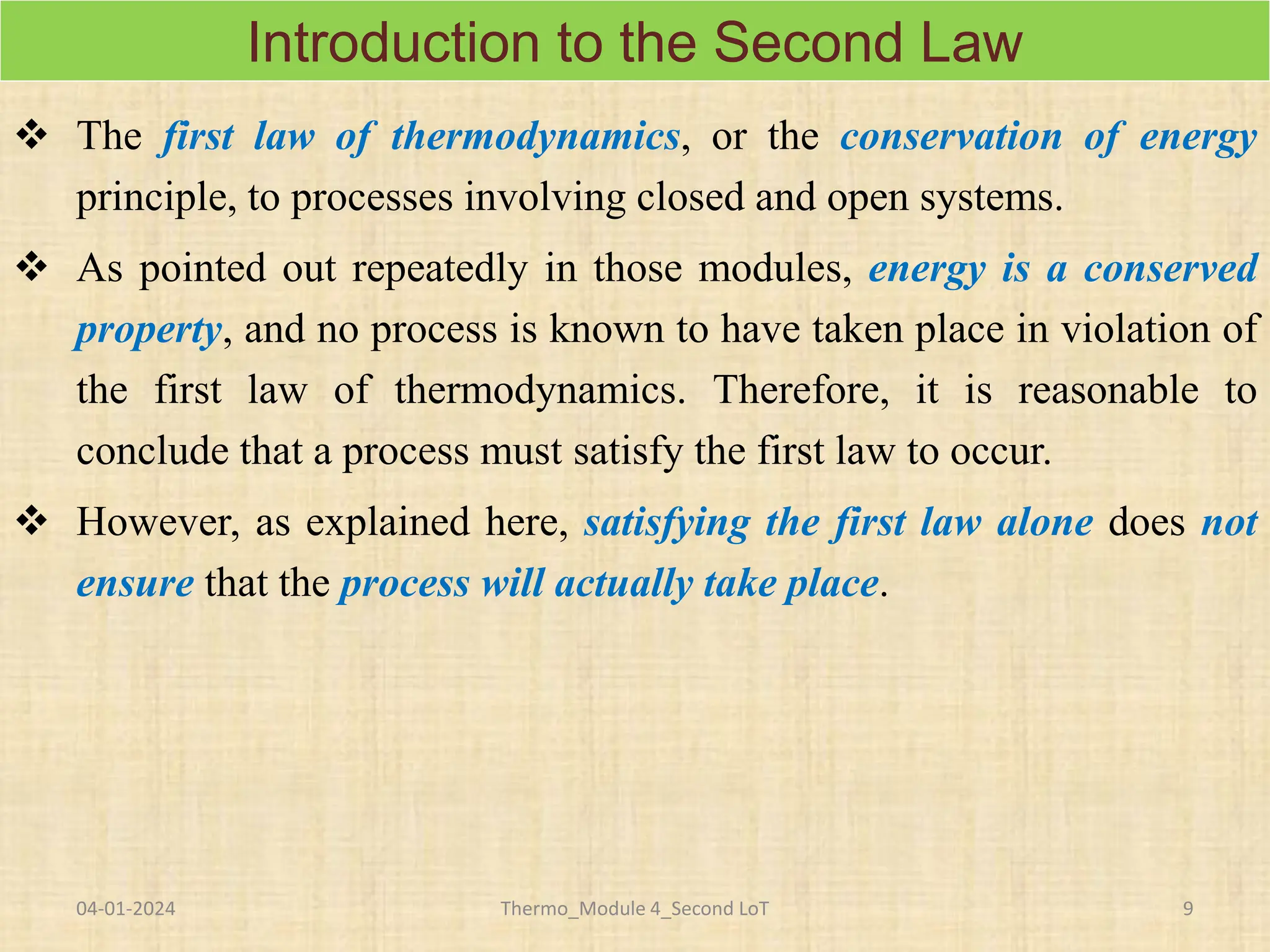The document discusses the second law of thermodynamics and key concepts related to heat engines. It introduces thermal energy reservoirs that can supply or absorb heat without changing temperature. Heat engines receive heat from a source, convert some to work, and reject the rest to a sink. The ideal heat engine operates on a cycle, with the working fluid undergoing a complete thermodynamic cycle. The steam power plant is provided as an example of a heat engine that closely follows this definition.







































































































